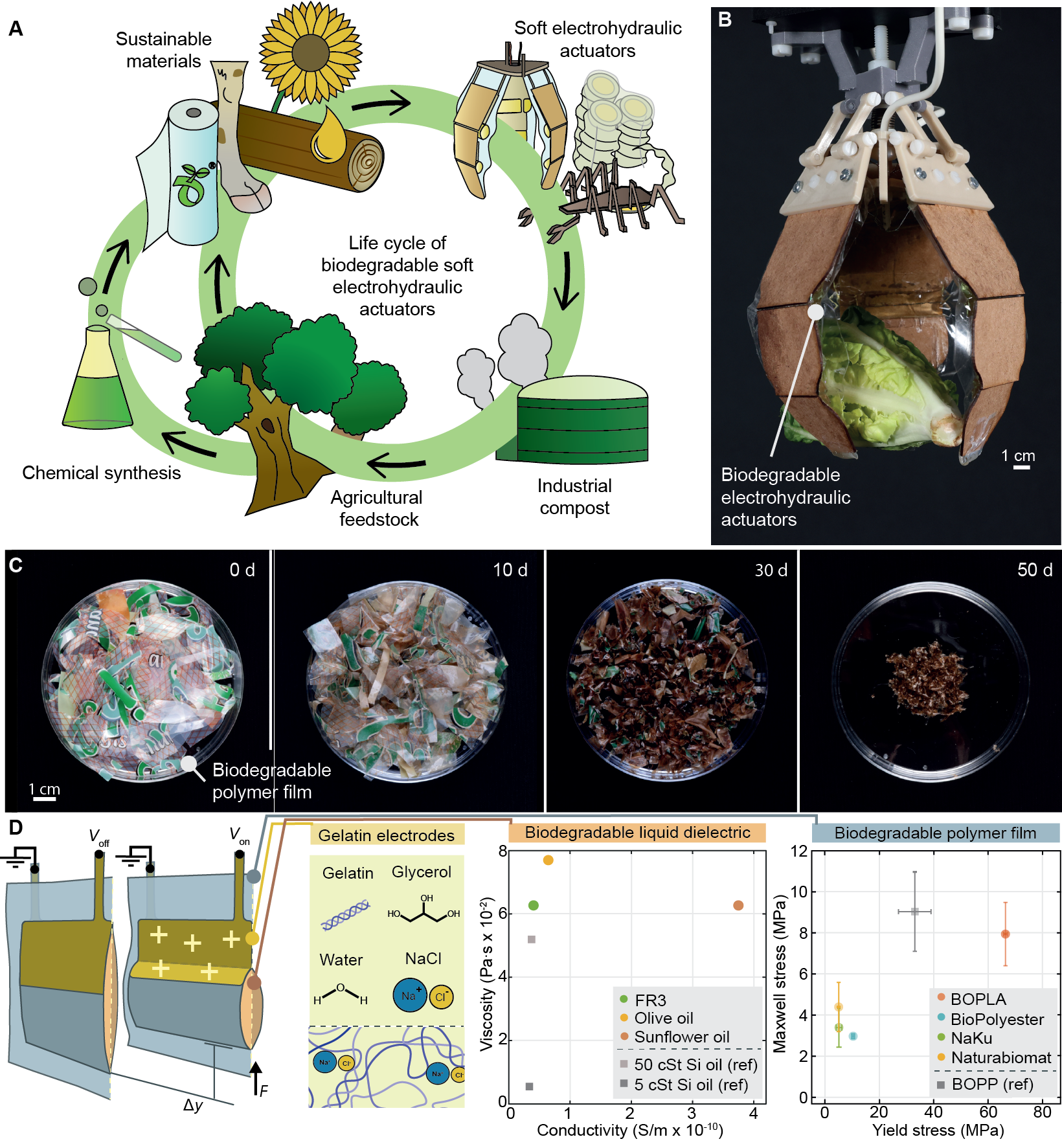Bioinspired and wearable robotics
A soft, fast and versatile electrohydraulic gripper with capacitive object size detection
A versatile jellyfish-like robotic platform for effective underwater propulsion and manipulation
Electrohydraulic musculoskeletal robotic leg for agile, adaptive, yet energy-efficient locomotion
A multifunctional soft robotic shape display with high-speed actuation, sensing, and control
Cutaneous Electrohydraulic (CUTE) Wearable Devices for Pleasant Broad-Bandwidth Haptic Cues
Biodegradable electrohydraulic actuators for sustainable soft robots

Ellen Rumley, Alona Shagan Shomron, Philipp Rothemund, Zachary Yoder, Benjamin Karrer, Christoph Keplinger et. al., Science Advances, 2023 []
Combating environmental pollution demands a focus on sustainability, in particular from rapidly advancing technologies that are poised to be ubiquitous in modern societies. Among these, soft robotics promises to replace conventional rigid machines for applications requiring adaptability and dexterity. For key components of soft robots, such as soft actuators, it is thus important to explore sustainable options like bioderived and biodegradable materials.
In this project, we introduced a strategy to identify materials systems, so as to fabricate fully biodegradable and high-performance electrohydraulic soft actuators. The material components of our actuators are biodegradable polymer films, ester-based liquid dielectric, and NaCl-infused gelatin hydrogel. These biodegradable soft actuators reliably operate up to electric fields of 200 V/μm, perform competitively to their nonbiodegradable counterparts, and exceed 100,000 actuation cycles without signs of electrical failure.
We demonstrate the capabilities of biodegradable electrohydraulic soft actuators in robotic applications by fabricating them into a single-use robotic gripper compatible with commercial robot arms that is capable of sorting trash into recycling bins. We show that commercial biodegradable materials designed for food packaging already boast sufficient dielectric properties for use in high-voltage applications, which serves to motivate the tailoring of biodegradable materials as high-performance dielectrics, and well as encourages the wider implementation of biodegradables in soft robotic systems.
Video
Members
Publications





